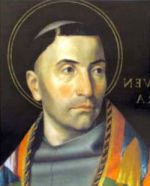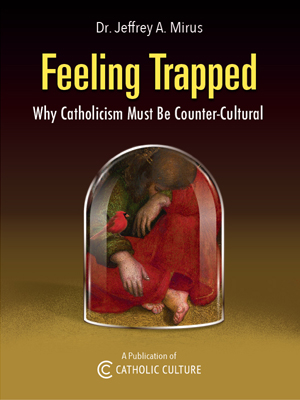Catholic World News News Feature
Romanian Catholic Church raised in status December 18, 2005
Pope Benedict XVI has raised the stature of the Romanian Catholic Church, naming Archbishop Lucian Muresan of Fagaras and Alba Julia as the "Major Archbishop" of the sui juris Eastern Church.
The creation of an archiepiscopal see is a clear sign of papal support for the Romanian Catholic Church.
A major archbishop ranks just below a patriarch in the Catholic hierarchy. Elected by the synod of his Church, with the approval of the Pope, the major archbishop fulfills essentially the same role as a patriarch, as the head of a self-governing Eastern Church.
Major Archbishop Muresan has been the ranking prelate in the Romanian Catholic Church, and the president of the Romanian bishops' conference. The Eastern Catholic Church which he now leads includes his own Archdiocese of Fagaras and Alba Julia, four other dioceses in Romania, and one diocese in the United States. (There are also five Roman Catholic dioceses in Romania.) The Romanian Church is one of the larger Eastern Catholic bodies, with over 700,000 faithful.
For Romanian Catholics, the recognition of a major archdiocese will bring an emormous boost in morale. Eastern-rite Catholics, who account for only 5 percent of the Romanian population, have clashed frequently with the hierarchy of the Romanian Orthodox Church, which forms the country's religious majority with nearly 85 percent of the population.
The Romanian Catholic Church suffered through brutal persecution during the Communist era, as the government sought to eliminate all evidence of an Eastern Church in communion with Rome. Priests and lay people were imprisoned, tortured, and executed; parish properties were confiscated, and in many cases turned over to the Romanian Orthodox Church. Since the fall of the Communist regime, the Romanian Catholic Church has sought the return of confiscated properties, and often voiced impatience with the failure of Orthodox officials to cooperate.
Disputes over church properties in Romania have been a source of tension in dialogue between the Vatican and the Orthodox world. A similar situation exists in Ukraine, where another Eastern Catholic Church has looked for the restitution of parish buildings that were seized during years of Communist persecution.
Prior to the elevation of Archbishop Muresan, which was announced on December 16, there were only three prelates in the Catholic world with the title of major archbishop: Cardinal Varkey Vithayathil of Ernakulam-Angamaly, who heads the Syro-Malabar Church in India; Archbishop Cyril Baselios Malancharuvil of Trivandrum, head of the Syro-Malankar Church, also in India; and Cardinal Lubomyr Husar of Kiev, the leader of the Ukrainian Catholic Church.
The Ukrainian Catholic Church, which is the world's largest Eastern Church in communion with Rome, has frequently sought recognition as a patriarchate. The Russian Orthodox Church has adamantly opposed that move, and the Ecumenical Patriarch of Constantinople has warned the Vatican that recognition of a Ukrainian Catholic patriarchate would endanger the future of ecumenical relations.
Nevertheless Pope John Paul II-- who frequently spoke of his admiration for the heroic witness of Eastern-rite Catholics under Communist persecution-- indicated that he would favor the creation of a Ukrainian patriarchate at an appropriate time. Pope Benedict XVI is believed to hold a similar view.






